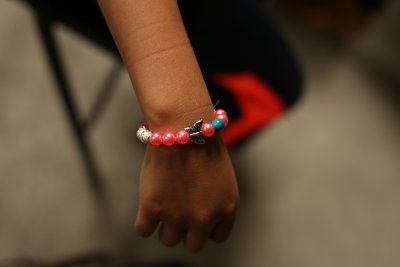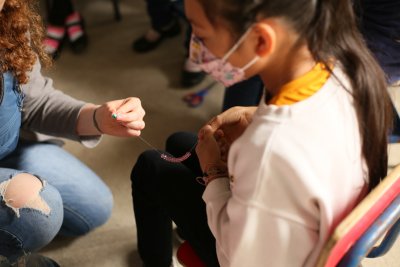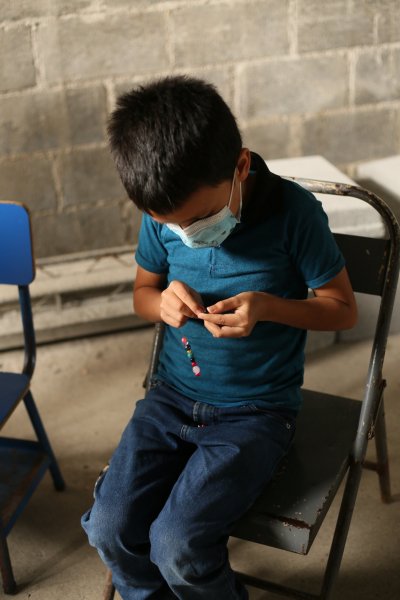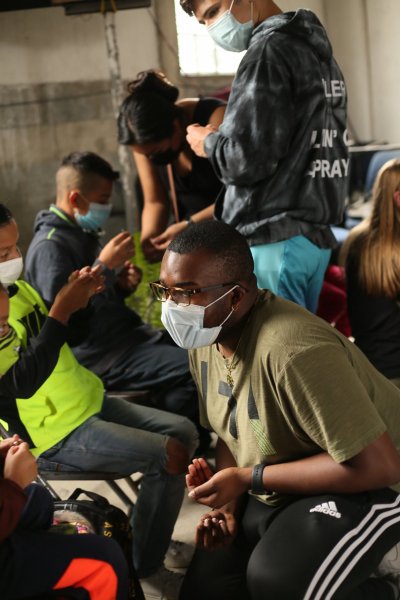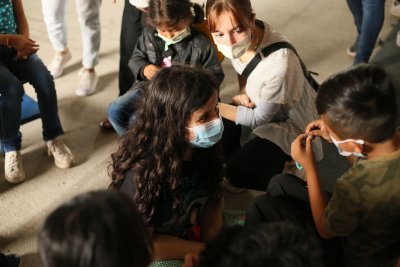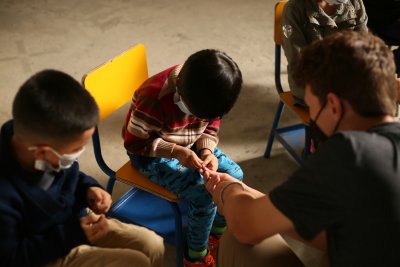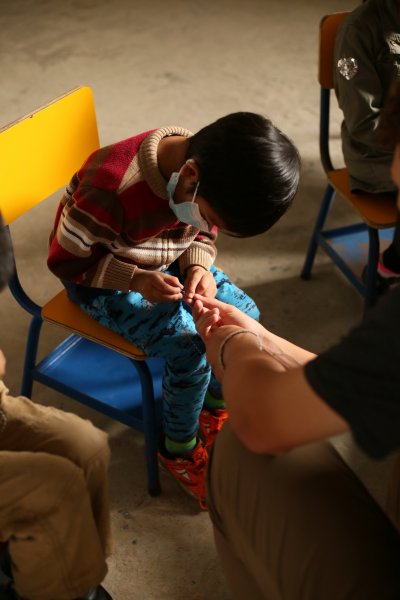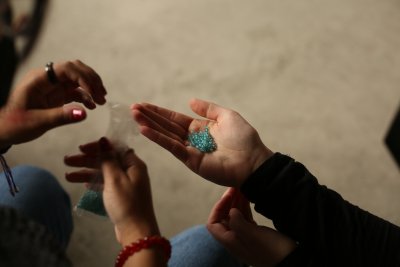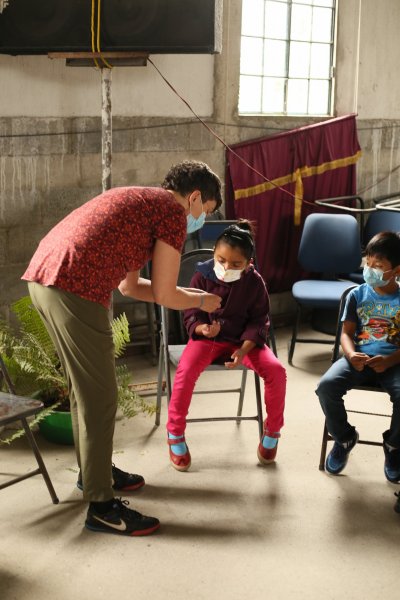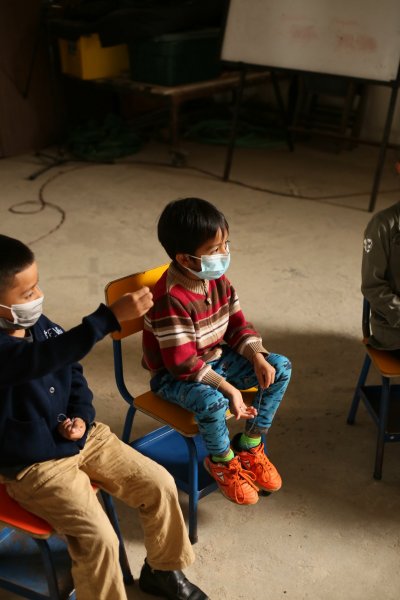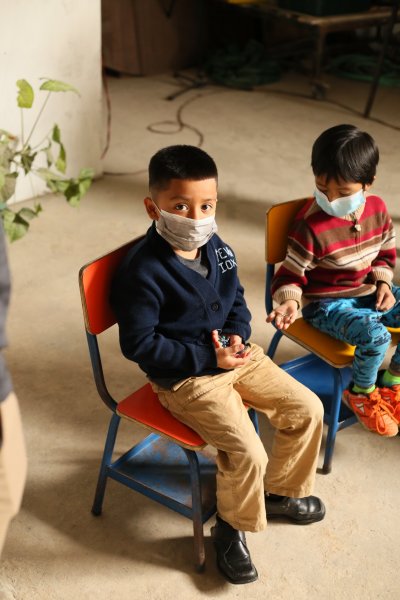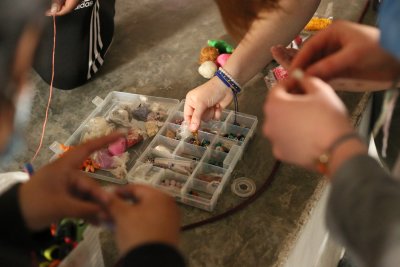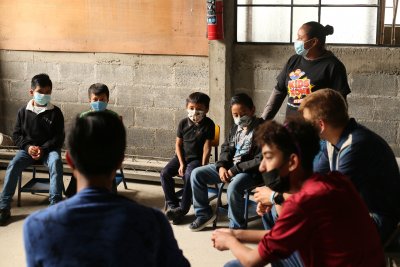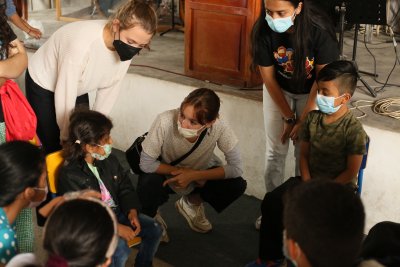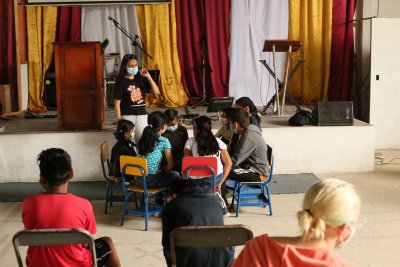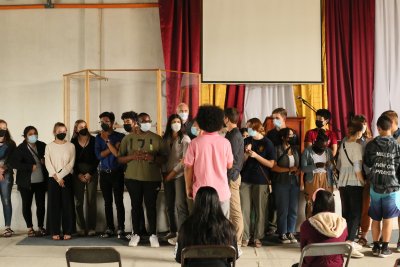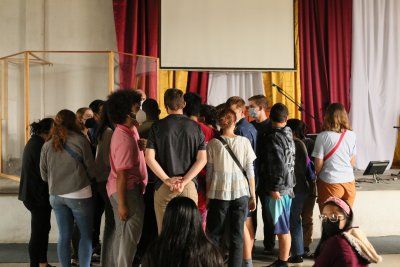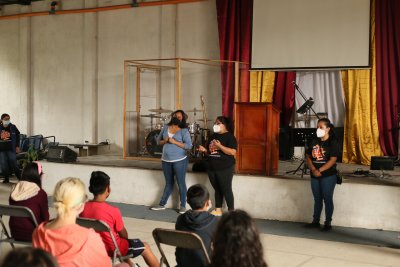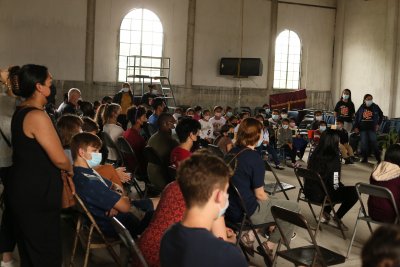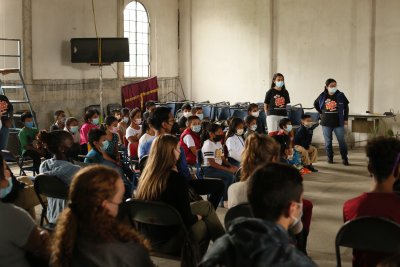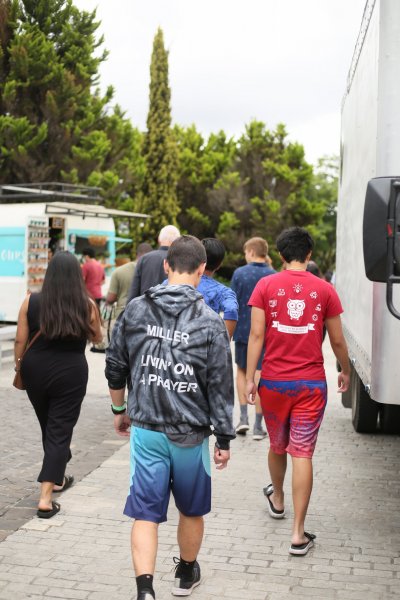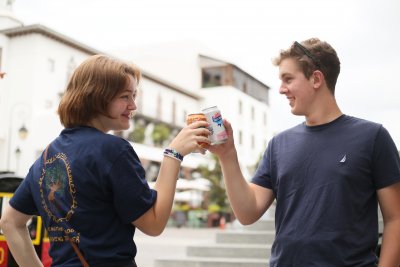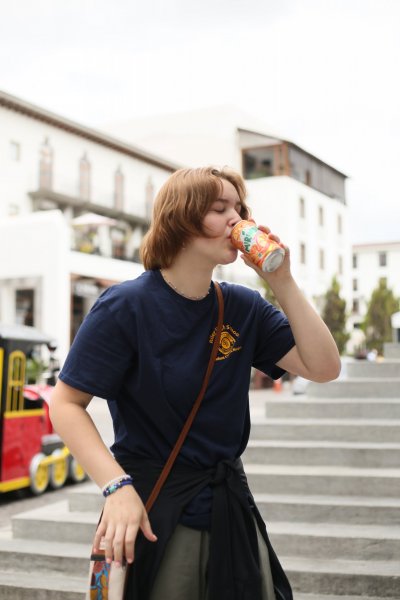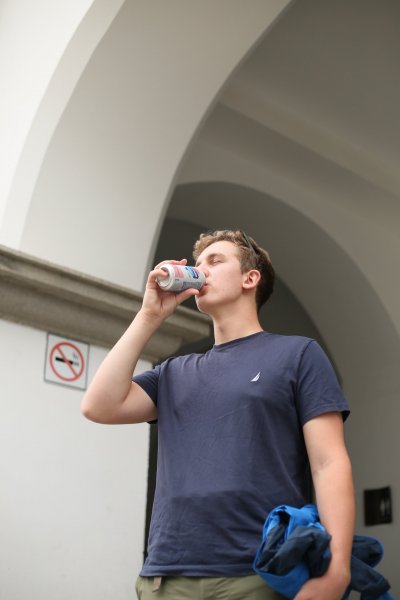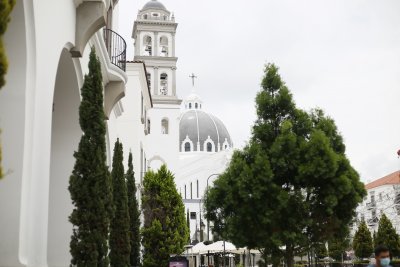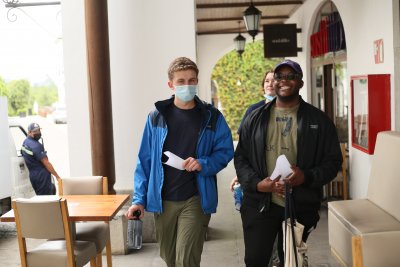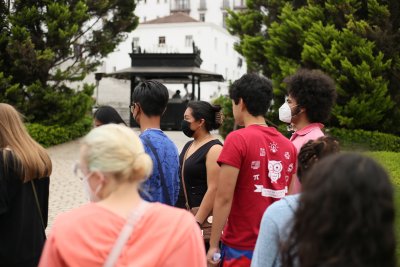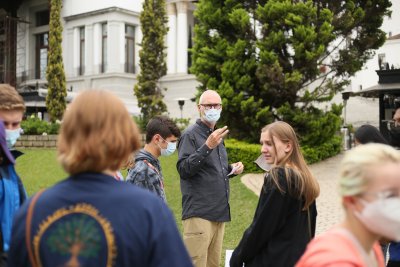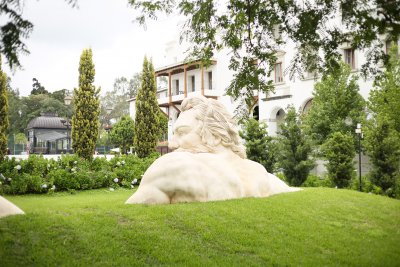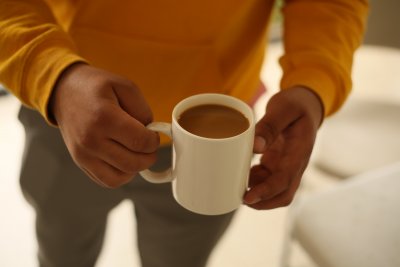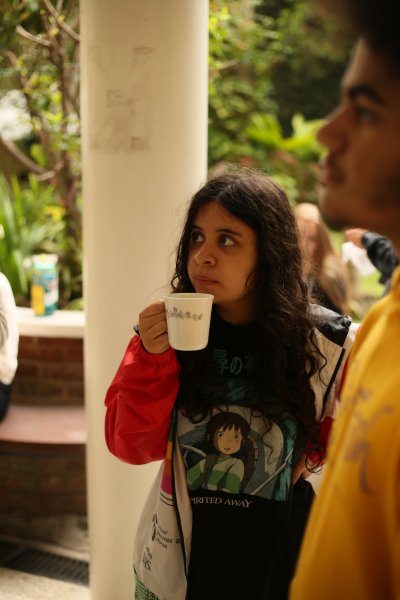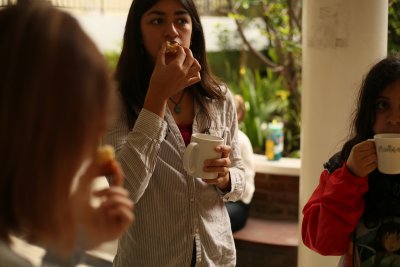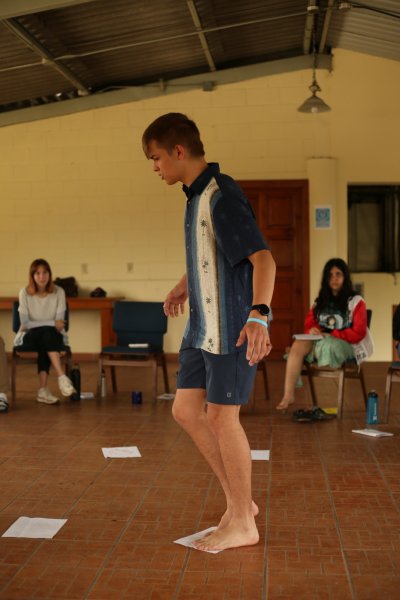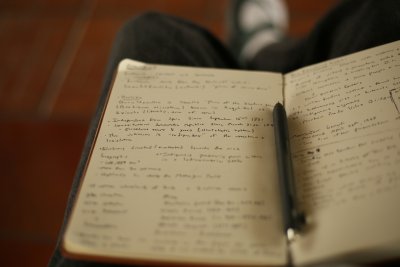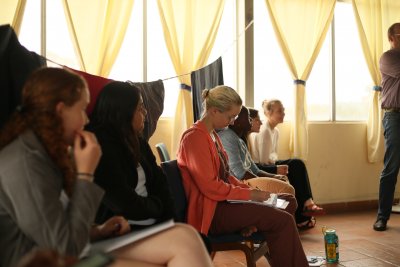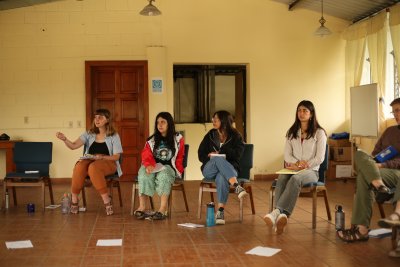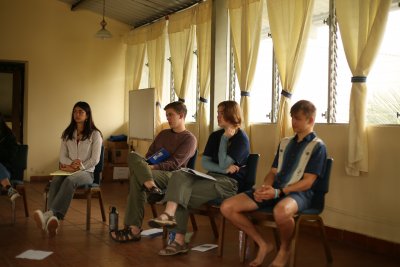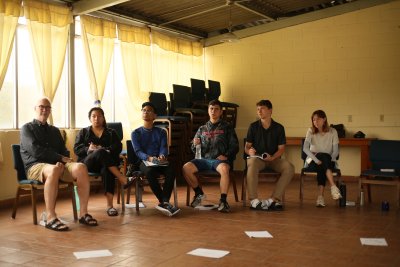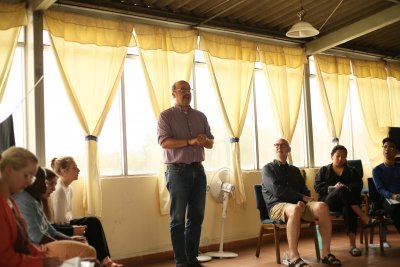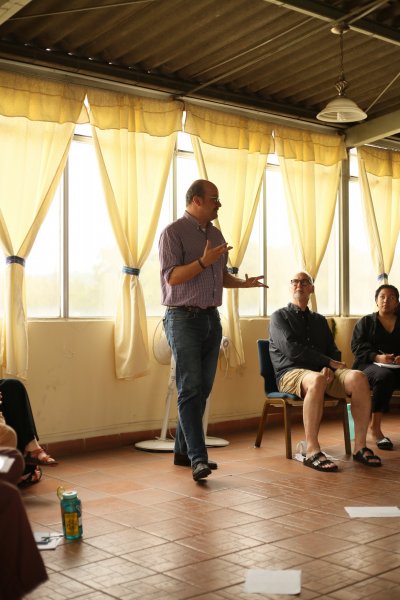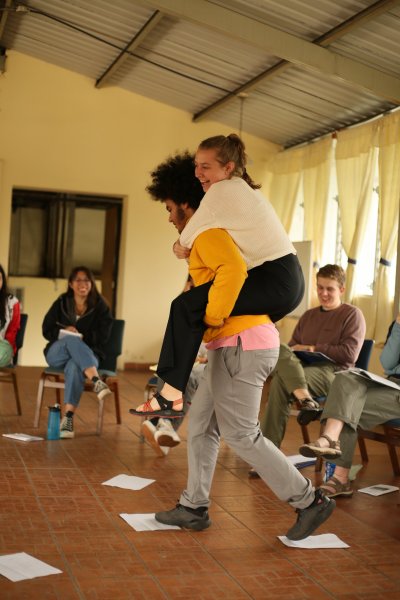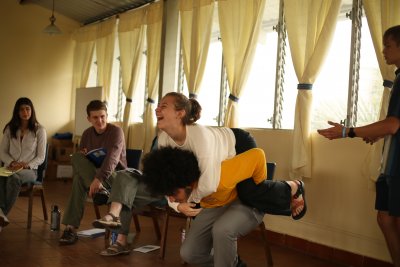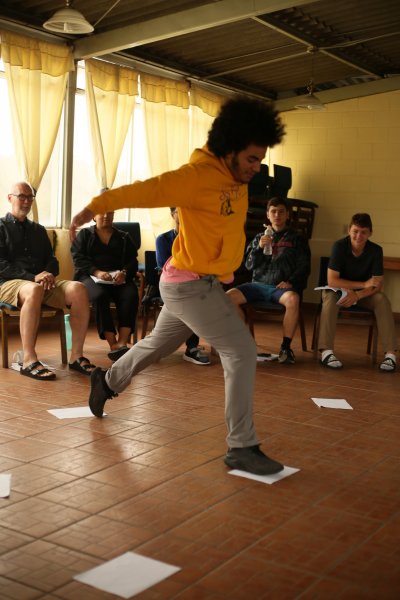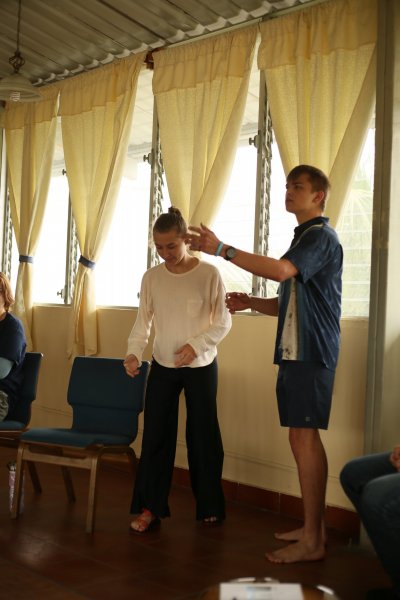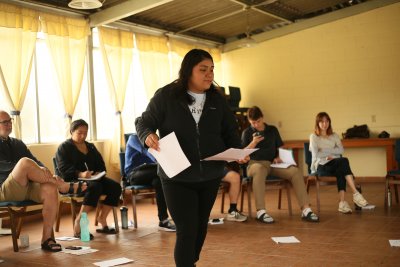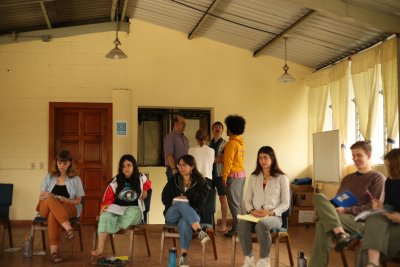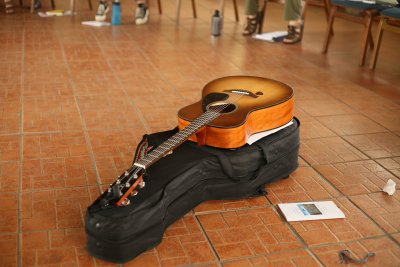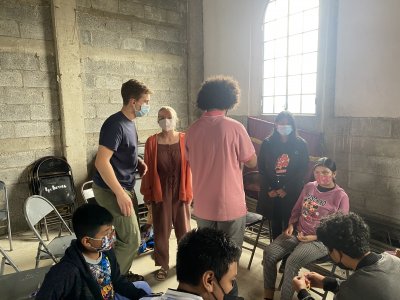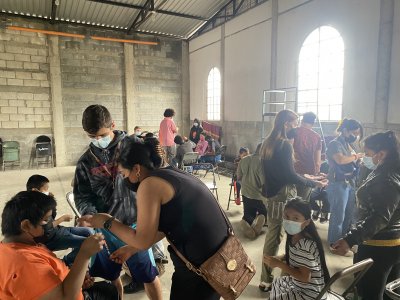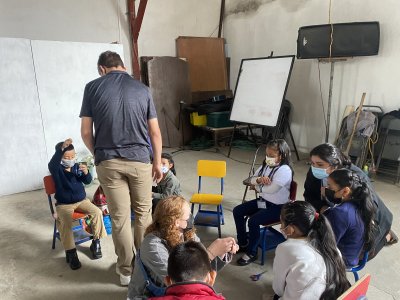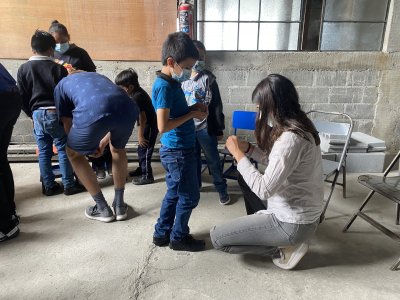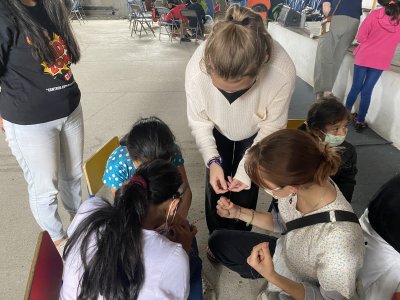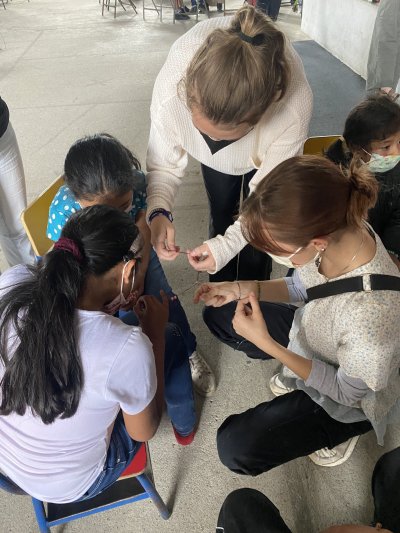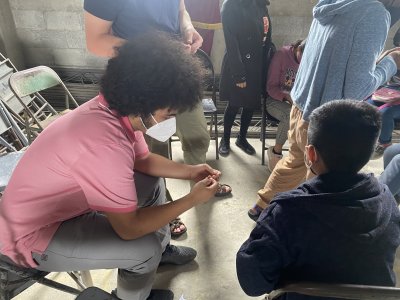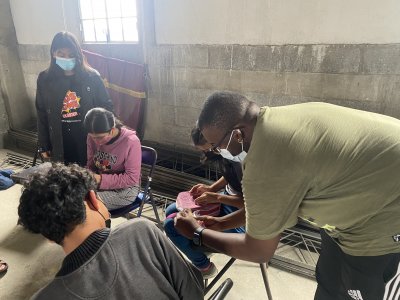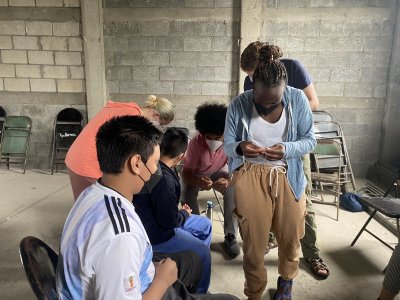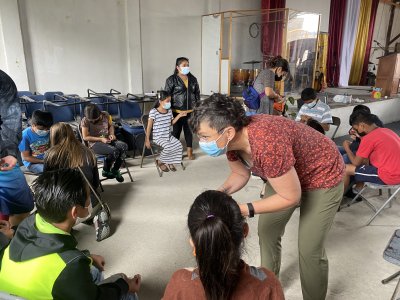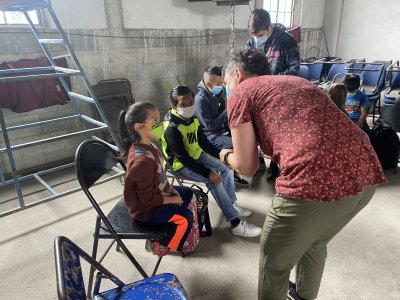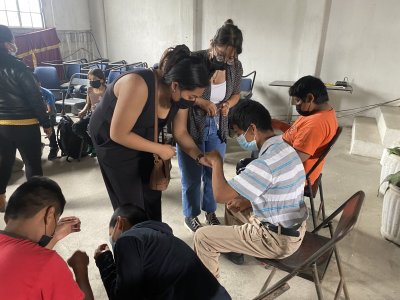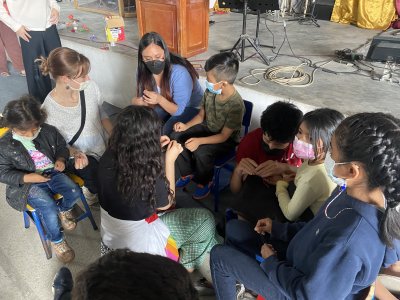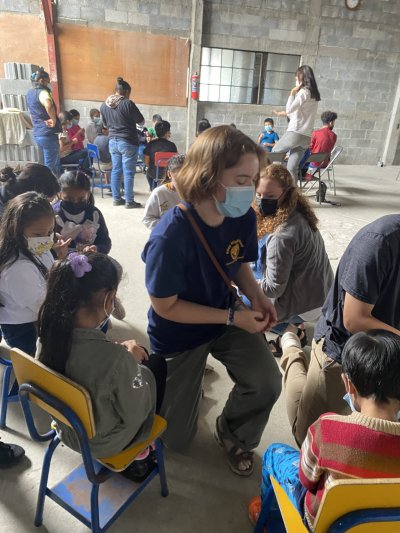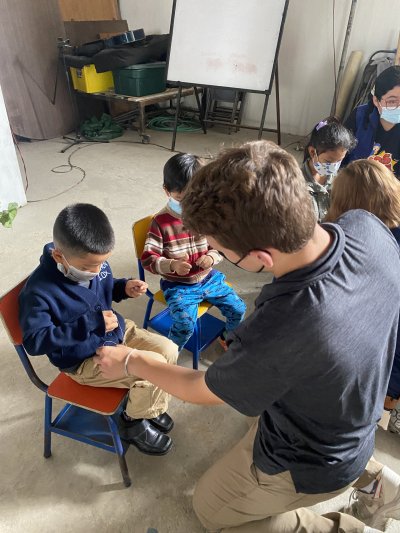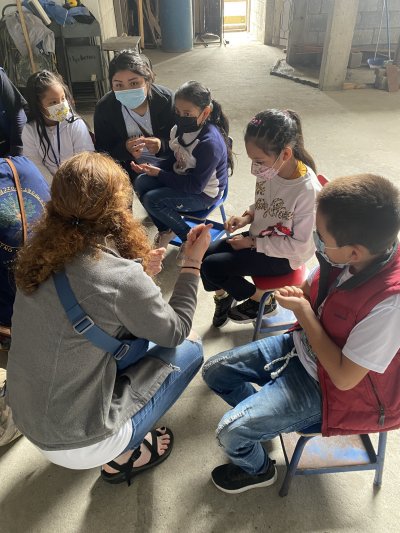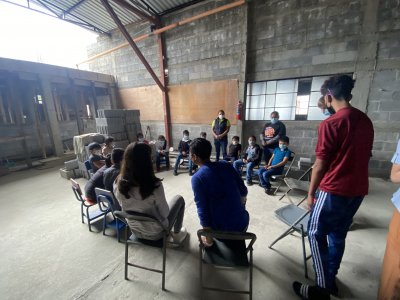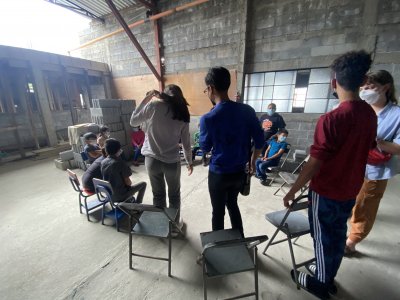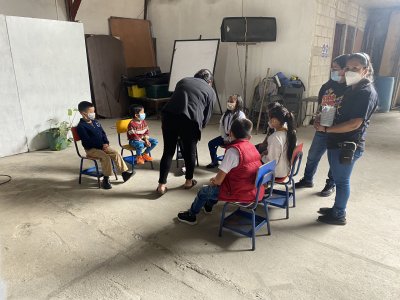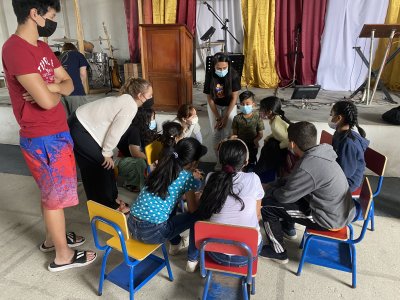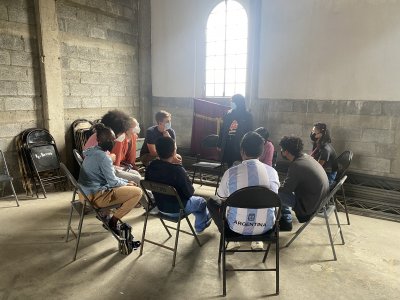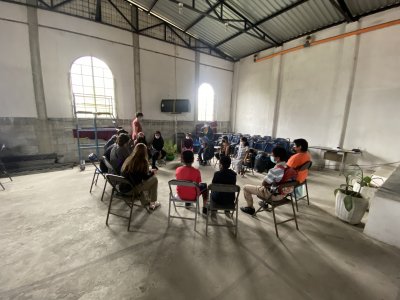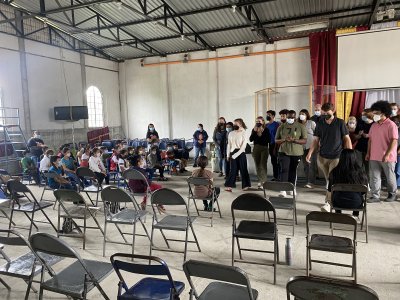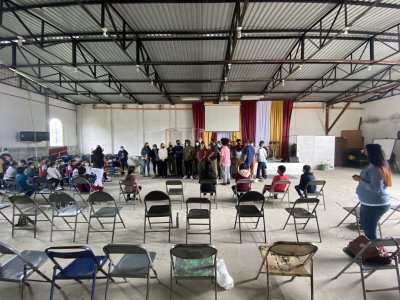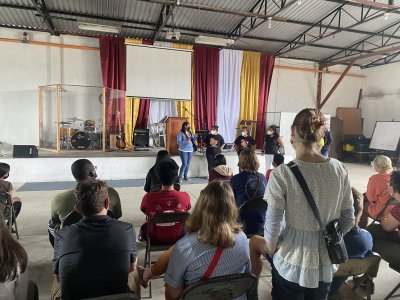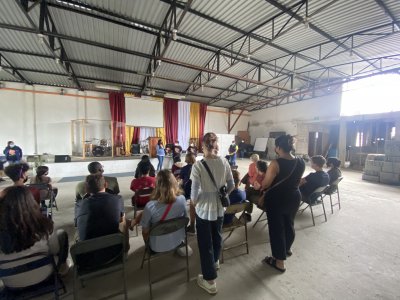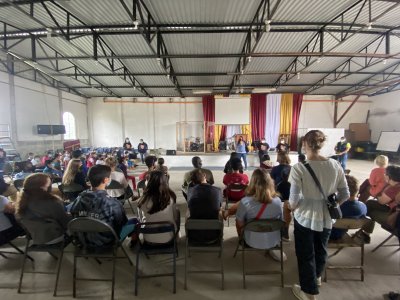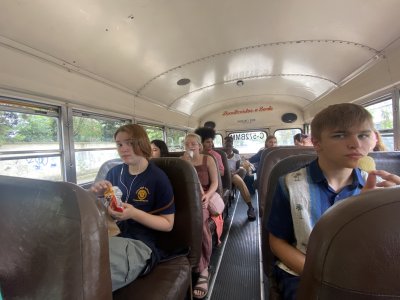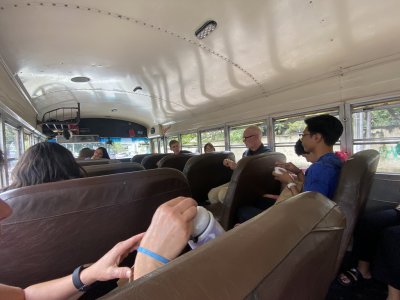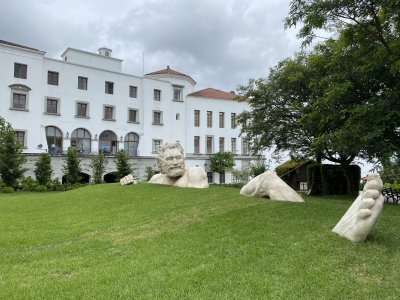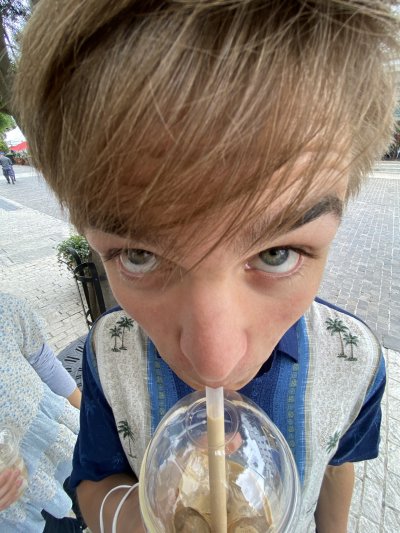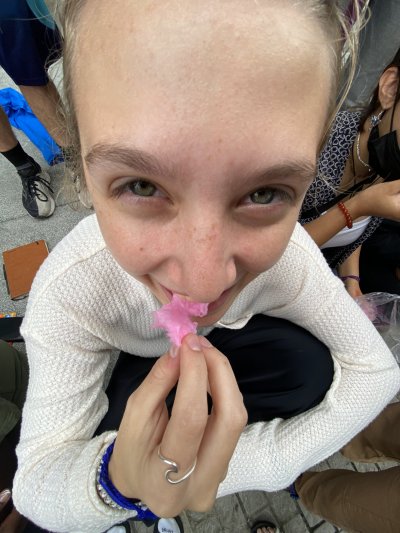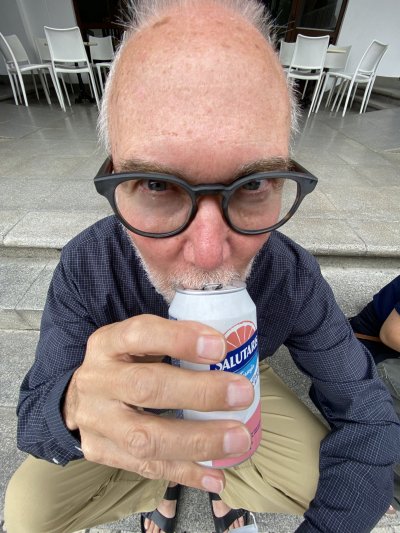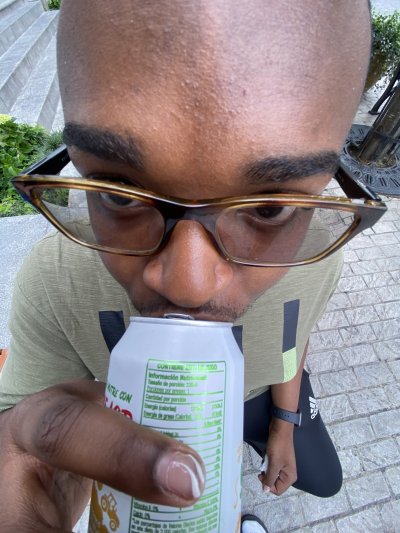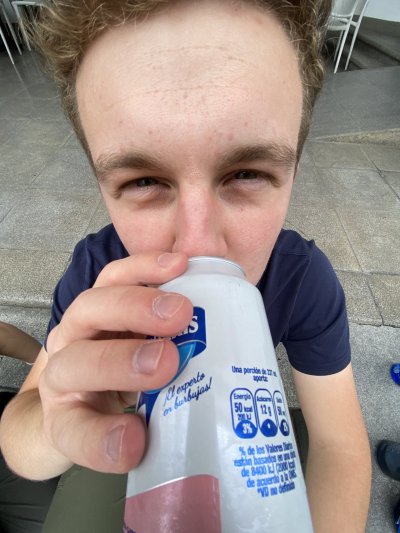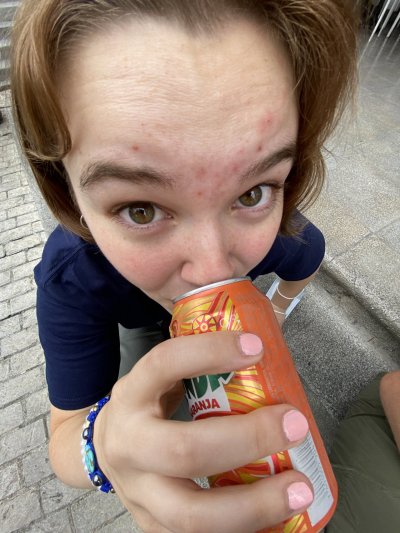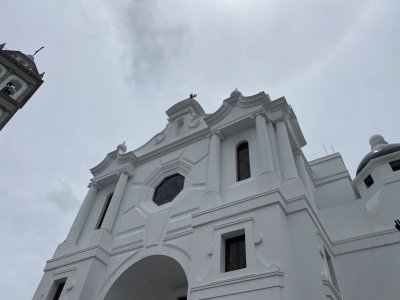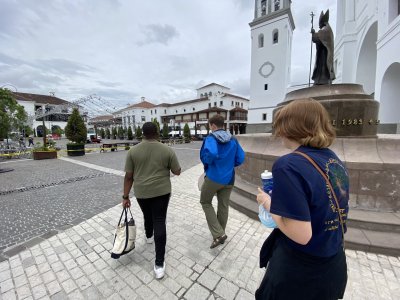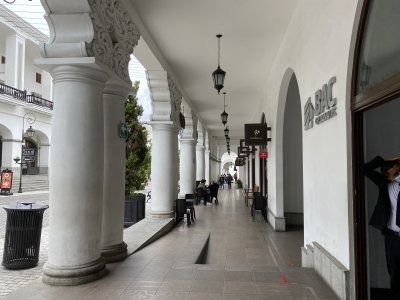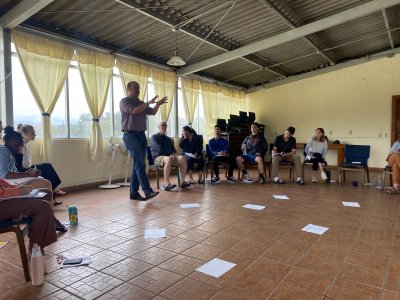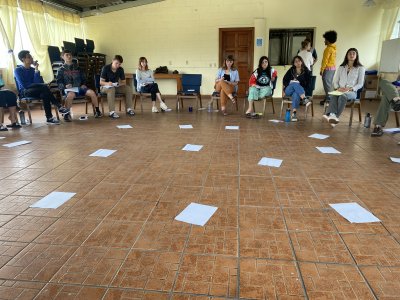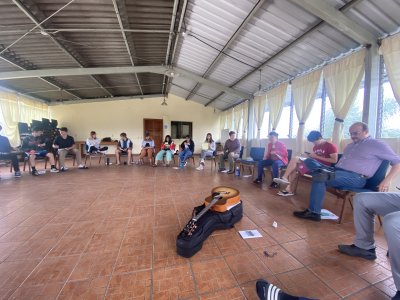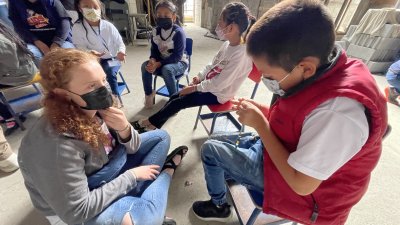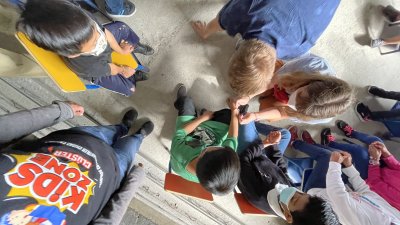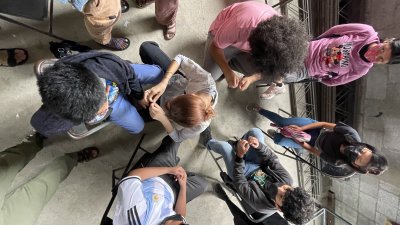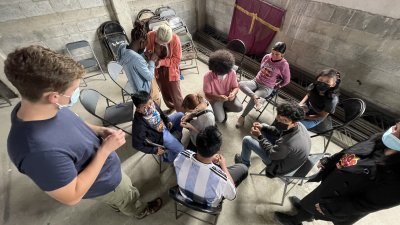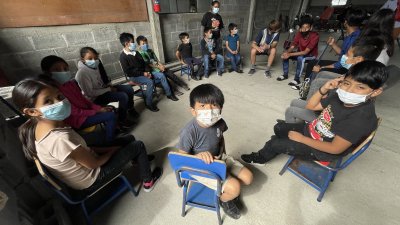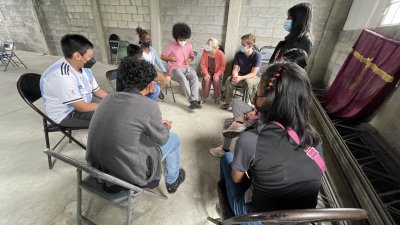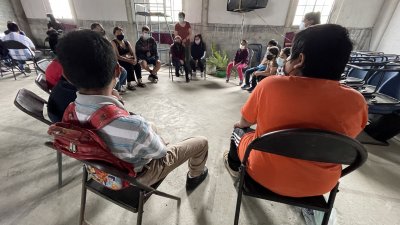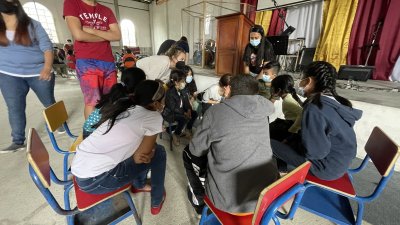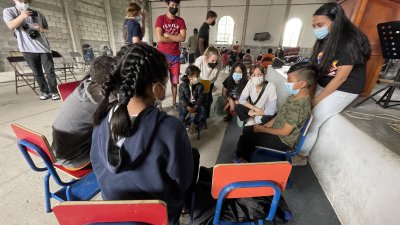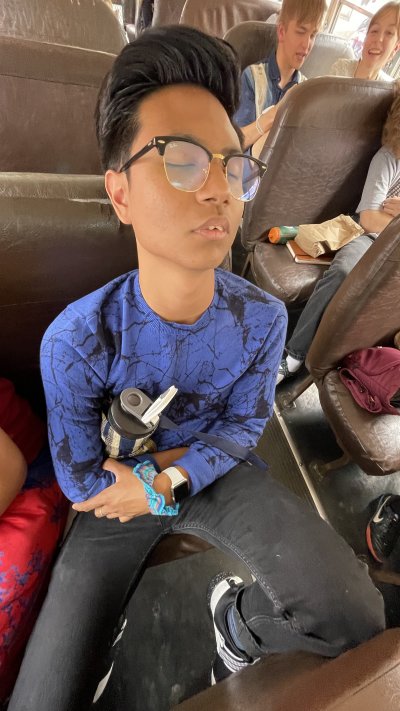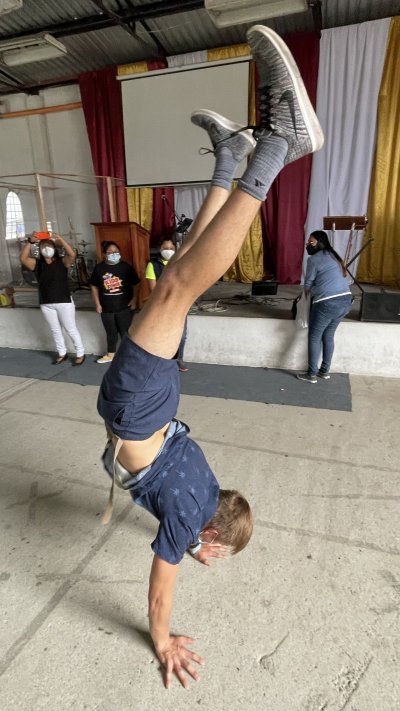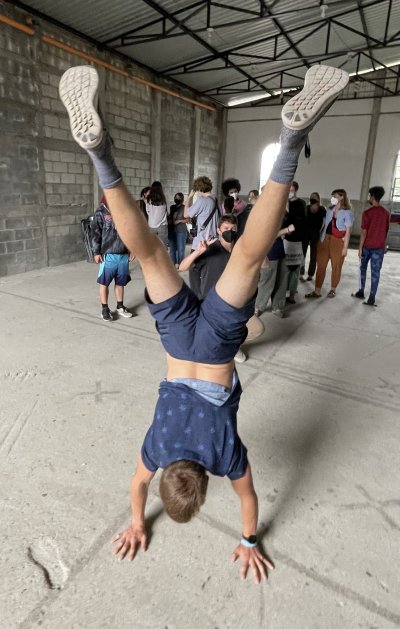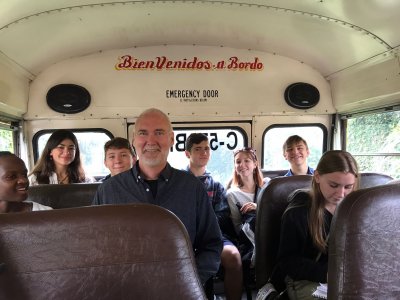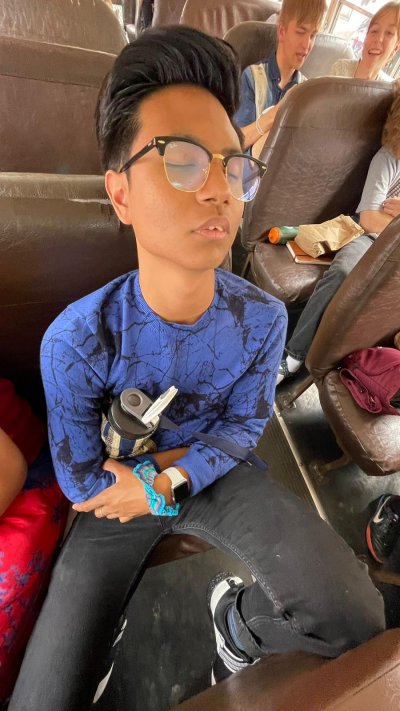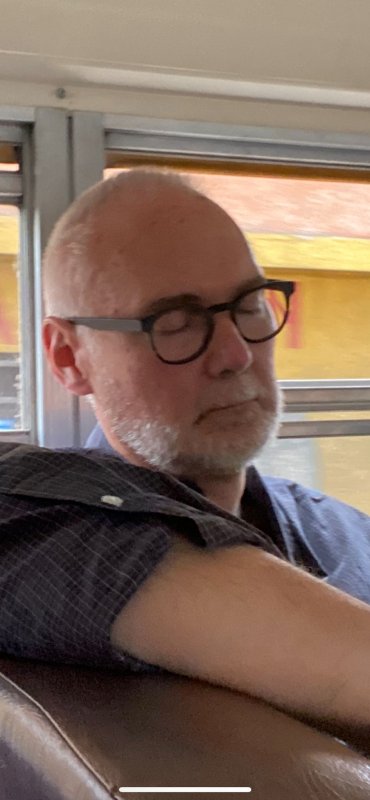Cayala Mall & Making Bracelets
This morning we were joined by MCC speaker Jack Lesniewski, a co-country representative for Mennonite Central Committee in Guatemala and El Salvador. After our centering prayer, which Jack joined, we learned more about how Jack grew up in the suburbs of New York and how he met his spouse while working for MCC here in Guatemala. Along with some background on himself, Jack shared some history regarding MCC. We learned that MCC first started working in Ukraine in 1920 and that Orie Miller (the person after whom the dorm we are staying in back on Goshen’s campus) was one of MCC’s founders. The work in Ukraine that MCC provided was mainly humanitarian relief, however, this kickstarted MCC’s work abroad for the next 100 years. MCC has helped to organize local partners, and project proposals, and monitor MCC-sponsored activities abroad.
Rather than kicking off class with a PowerPoint presentation, Jack called for three students to help with a visual performance of sorts. Daniel, Lucca, and Francisco all stepped forward to aid Jack in this visual spectacle. After Jack had taken them aside, he returned to our large seminar circle, where set designer Evelyn had laid out sheets of white paper (stones across a river). He proposed a scenario in which students had to cross a “river” by stepping on these sheets of paper. However, the exercise was done with several alternate scenarios, each illustrating a different way a non-governmental organization such as MCC might work in a community, accompanying local leaders trying to bring about small or larger transformations. MCC seeks to work alongside community leaders, supporting their directions and providing resources, all in the name of Christ.
After being postponed for a day, our contrast tour to Cayala Mall presented something quite different from what we’ve experienced so far. Cayala Mall is home to an international school, an opulent outdoor mall, and (soon) the U.S. Embassy. The primary exercise that we took part in was to look around and consider some of the contrasts within Guatemala and to think about our own country and how similar situations are also found within our context. In addition to this exercise, we were each given ten Quetzales (around $1.31 U.S.), about half the daily wage (20 Quetzales, or $2.60 U.S.) for about 24 percent of Guatemala’s population, to spend anywhere within the mall. We had done a similar exercise in the Central Market when we had to purchase a fruit that we had never tried before for ten Quetzales. The challenge was especially difficult within the Cayala Mall as the majority of the mall is directed toward the wealthy within Guatemala. This being said, as the students walked around the complex, they found it increasingly difficult to find something worth ten Quetzales or less. With stores like Starbucks, Banana Republic, and Nike looming around every corner, the prices were just as large as these big brand stores. After diligently searching Cayala some students were able to purchase vending machine snacks, chocolate-dipped bananas, tik-taks, and hair ties. All of these things aren’t necessarily items that someone could survive off of for a long period of time with a daily wage of twenty Quetzales. To buy a shirt and jeans from the Banana Republic would take about 86 days’ wages for a rural Guatemalan.
Following our excursion to Cayala Mall, we stopped by a local school within zone seven of Guatemala City. The school houses primarily elementary school students as well as some middle school students. While there, we sang two of our worship songs for the students of zone seven and split into groups to make bracelets. Splitting into groups made for a much more enjoyable time making bracelets with the younger kids. Although our time there was limited we made the best out of spending time with them.
In his journal about our earlier trip to Puerta de Esperanza and the Terminal Market – one of the most powerful visits thus far – Josiah made reference to the complexity and difficulty of life in the market and the nearby one-room, concrete market-vendor-family “residences,” which have no toilets or showers. Josiah wrote (quoted by permission): “Through all that, we heard about how much good Puerta de Esperanza was doing, and how they were helping and benefiting the lives of so many people in the Terminal Market. Humans can make a difference. Humans do make change … What good is the knowledge of all the darkness if we’re not going to strike a match?” Indeed. The experiential knowledge we are gaining is washing over us and into us, and with it comes responsibility and calling … how will we respond? Students are reflecting thoughtfully on such questions in their daily journaling.
We were originally planning to depart for Lago de Atitlan tomorrow morning at 6 a.m., however, due to a slight schedule mishap (whoopsie), we’re visiting the Margarita Tejada Foundation, a Down Syndrome school located within Guatemala City, and then we will have two-afternoon classes back at SEMILLA. On Friday we’ll leave for an overnight trip to nearby Antigua. Atitlan will be scheduled for the end of next week prior to our departure for home.
-Alexander Koscher
